Iannis Xenakis (1922–2001), who was originally trained as an engineer, worked as an architect in Le Corbusier’s office.
He designed – in co-authorship with Le Corbusier – the vessel containing the Poème, the shell structure of the Philips Pavilion.
Xenakis, was to become an internationally renowned composer, and he continued his research into complex architectural forms and the equally complex ephemeral architectures of music, sound and light.
Publication Hybrid Architectures of Iannis Xenakis @ Conference Poetics of Space, Sonic Acts 2010, Amsterdam, 25 February 2010
In the aesthetic production of the twentieth century, the Poème Électronique is a fascinating moment of artistic synergy. The architect, Le Corbusier, conceived an electronic synthesis of visual and acoustic events, and a vessel containing the poem for the Philips corporation presentation at the 1958 Brussels World Fair. The composer Edgar Varèse contributed the acoustic part, the spatialized piece of music entitled Poème Électronique.
Iannis Xenakis (1922–2001), who was originally trained as an engineer, worked as an architect in Le Corbusier’s office. He designed – in co-authorship with Le Corbusier – the vessel containing the Poème, the shell structure of the Philips Pavilion. Xenakis, was to become an internationally renowned composer, and he continued his research into complex architectural forms and the equally complex ephemeral architectures of music, sound and light.
Xenakis’s experience of working simultaneously in architecture and music opened the way for the practice of applying the same structures in music and visual events (his Polytopes and Diatope), and for transferring mathematical–scientific structures into artistic production. His transfer and use of scientific–mathematical methods is more than a practical solution to the problems of processing the dynamic formations of sound and light events, of organizing the mass phenomena of clouds of sounds and galaxies of light that he is confronted with while composing; it is an integral part of world-view and his approach to art.
In the 1960s Xenakis started to develop a custom-made computer to control and (de-)synchronize the overlaps between musical and visual events, and integrated it in his creative process. This digital instrument, the UPIC, is a music-computer with an architect’s drawing board as interface that transforms graphical information into music and sound. Linking visual and acoustic forms via the bridge of mathematical information, this computer reflects Xenakis’s holistic approach to form and is an integral part of his research on complex structures and their materializations in very different media and dimensions, in sound, in light, in time and space.
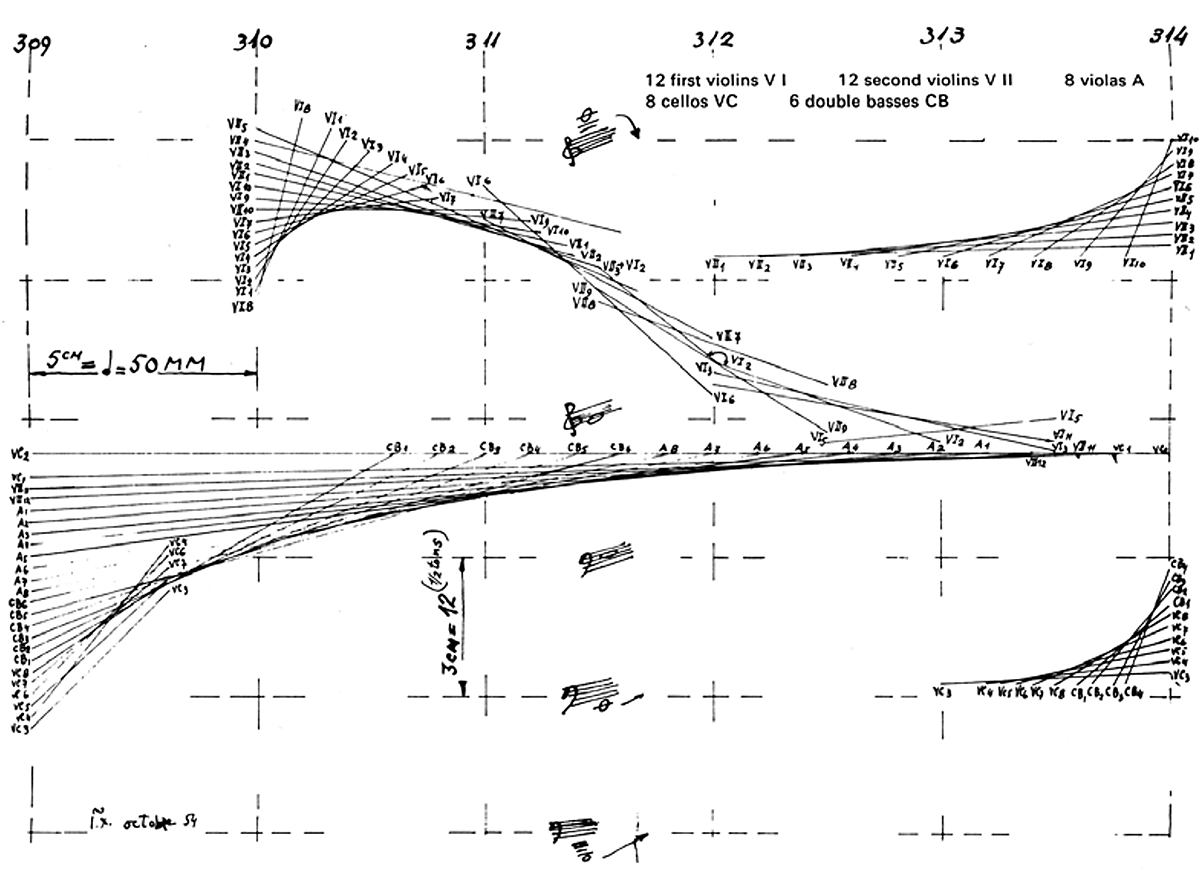
→ Iannis Xenakis, Notations for the hyperbolic paraboloid structures of Metastaseis, 1953–54
Before working on the Philips Pavilion, Xenakis had introduced hyperbolic paraboloid structures in his musical composition Metastaseis (1953–54): graphs of straight lines mapping the rising or falling sounds of each instrument, the glissandi, generate curved, ruled, surfaces of sound.
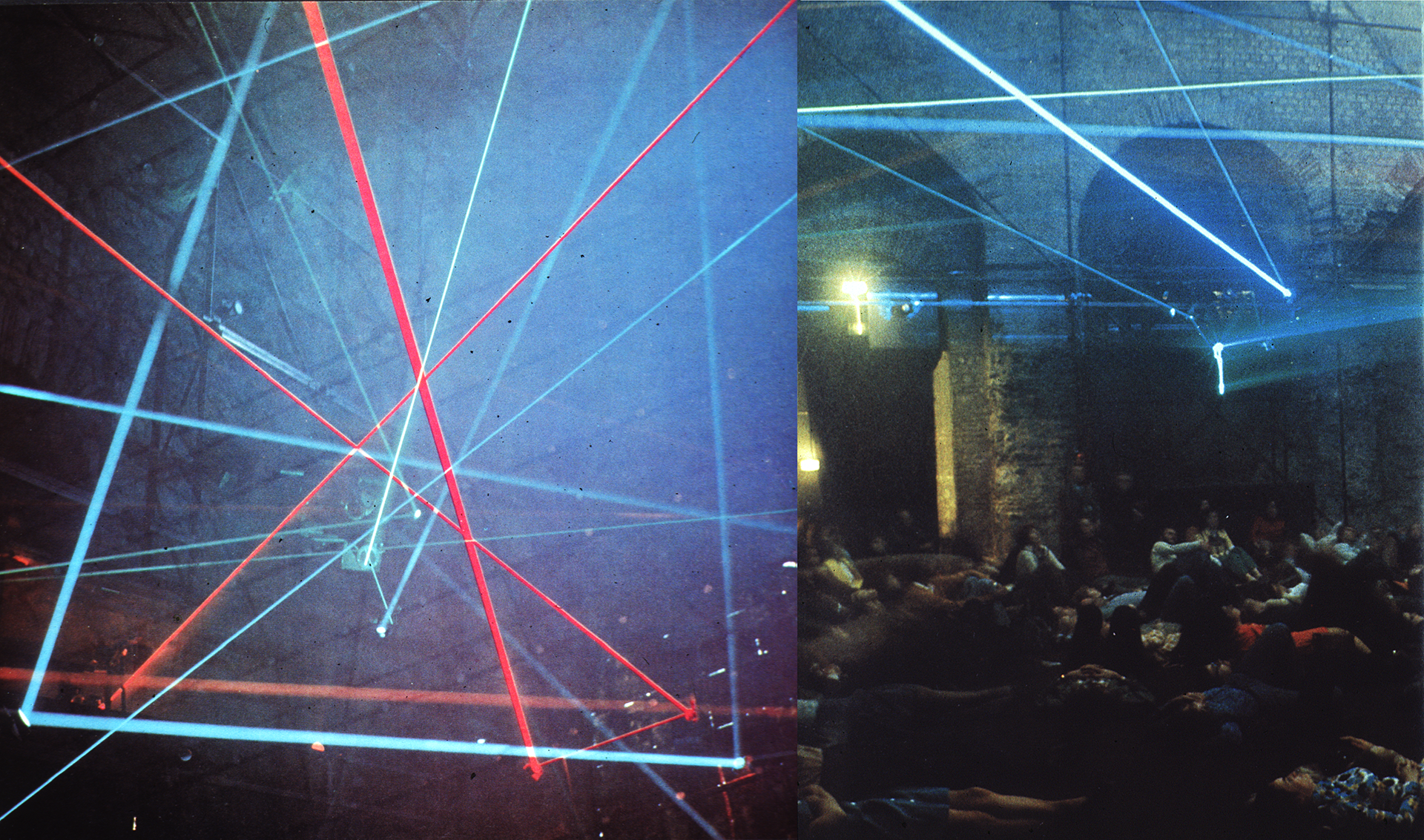
→ Iannis Xenakis, Polytope de Cluny, in the Roman thermal baths of Cluny in Paris 1972–74.Iannis Xenakis, Polytope de Cluny, in the Roman thermal baths of Cluny in Paris 1972–74
Xenakis worked with architectural elements that capture, guide and transform light.
For the Convent of La Tourette, Xenakis designed a rhythmically structured facade, the pans de verre ondulatoires (undulating glazed panels), and the skylights, the Light Canons.
These architectures of light evolved later in Xenakis’s compositions of sound and light: the Polytopes (Polytope of Montréal, 1967; Polytope of Osaka, 1970; Polytope of Persepolis, 1971; Polytope of Cluny, 1972–74; and Polytope of Mycènes, 1978).
The word polytope (poly-topoi, ‘multiplicity of places’) describes the overlaying of music and light, creating various ever-changing asynchronous places.

→ Iannis Xenakis, graphical notations for Polytope de Cluny.Iannis Xenakis, graphical notations for Polytope de Cluny.
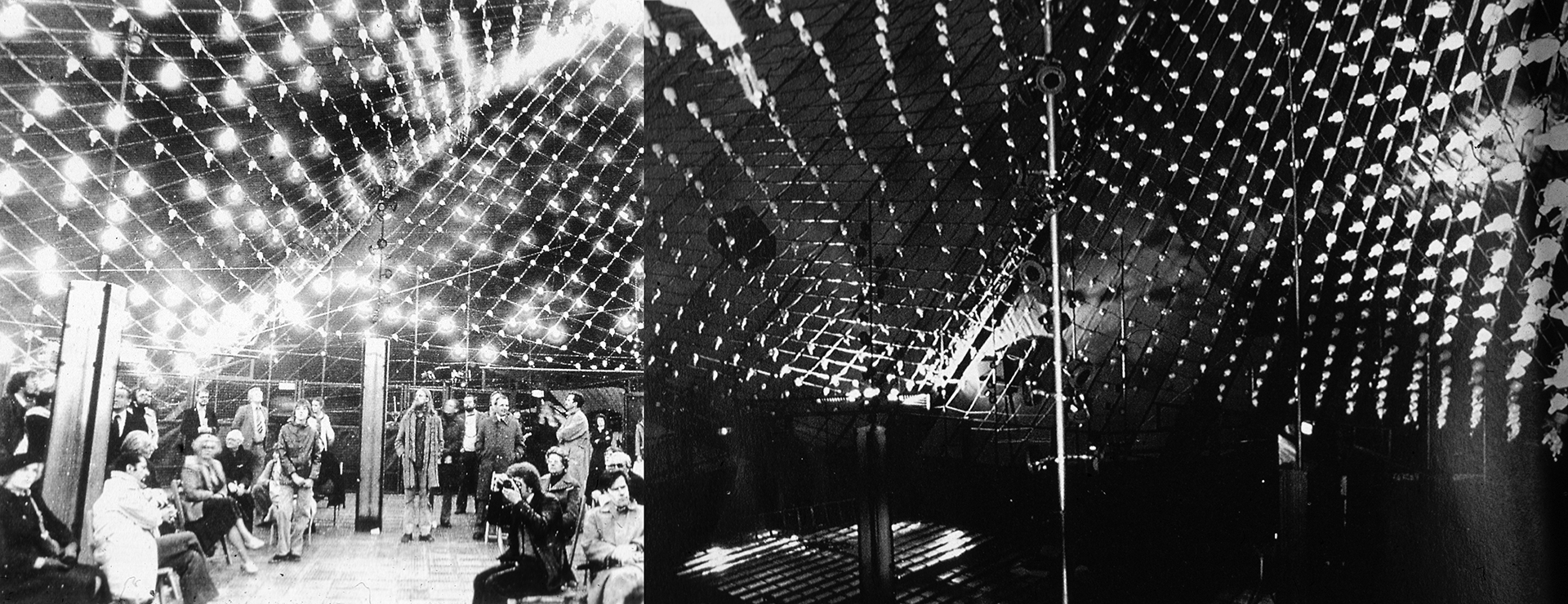
← Iannis Xenakis, Model of the temporary, mobile pavilion of the Diatope, Paris/Bonn, 1978–79.
→ Iannis Xenakis, Sketch of the Diatope, Paris/Bonn, 1978–79.Iannis Xenakis, Interior of the Diatope, Paris/Bonn, 1978–79.
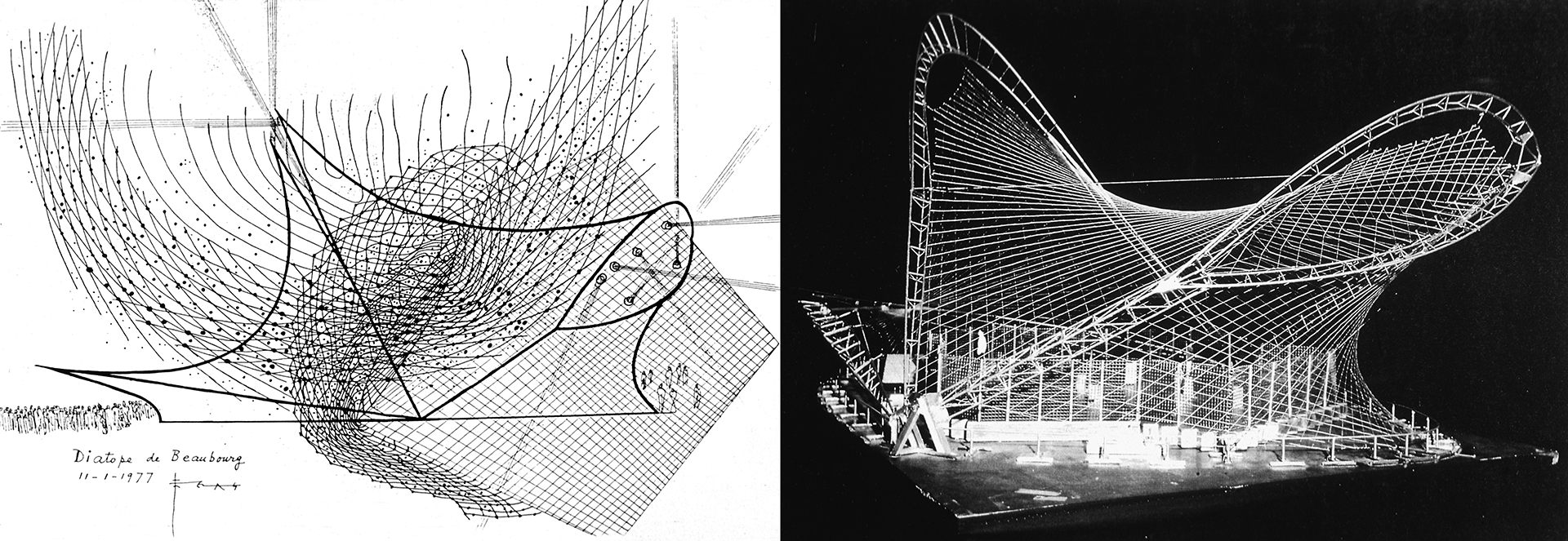
← Iannis Xenakis, Model of the temporary, mobile pavilion of the Diatope, Paris/Bonn, 1978–79.
→ Iannis Xenakis, Sketch of the Diatope, Paris/Bonn, 1978–79.Iannis Xenakis, Interior of the Diatope, Paris/Bonn, 1978–79.
The Diatope (meaning ‘through-place’) was a combination of sound and light effects in a translucent pavilion Xenakis designed for this purpose. The Diatope was planned for the inauguration of the Centre Georges Pompidou in February 1978, but for technical reasons was only realized in June 1978 and set up again in Bonn in 1979.
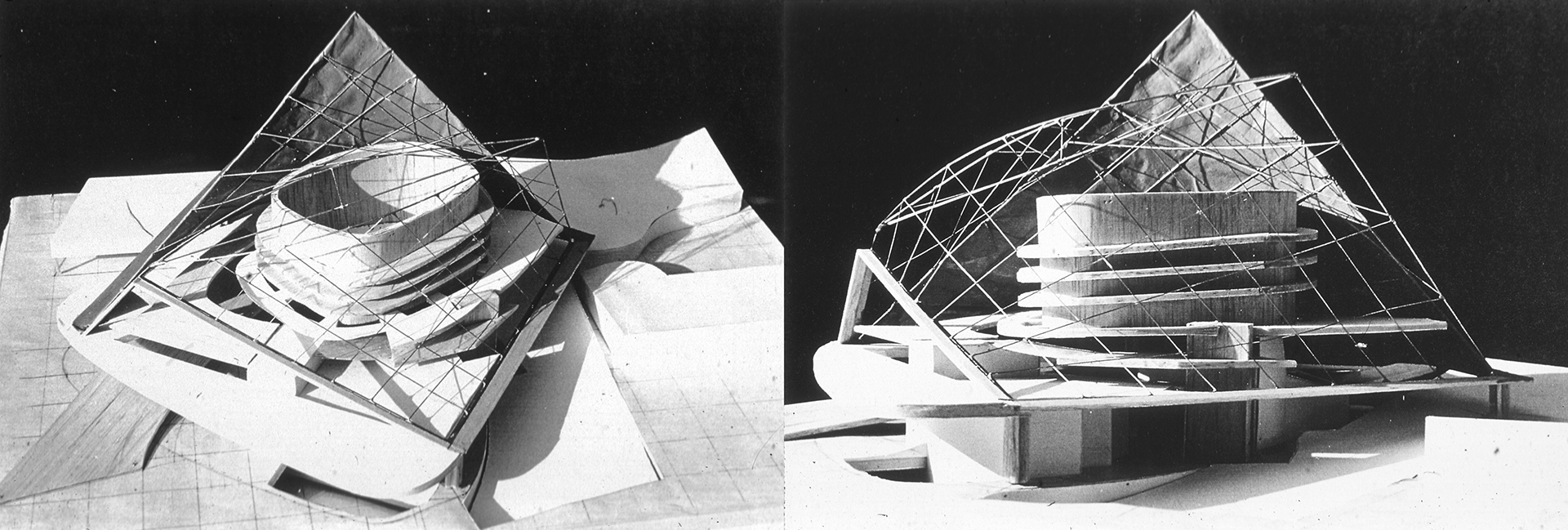
← Iannis Xenakis, Model of the temporary, mobile pavilion of the Diatope, Paris/Bonn, 1978–79
→ Iannis Xenakis, Model of the temporary, mobile pavilion of the Diatope, Paris/Bonn, 1978–79
The Diatope (meaning ‘through-place’) was a combination of sound and light effects in a translucent pavilion Xenakis designed for this purpose. The Diatope was planned for the inauguration of the Centre Georges Pompidou in February 1978, but for technical reasons was only realized in June 1978 and set up again in Bonn in 1979.

← Iannis Xenakis, Polytope in the French Pavilion at the Expo ’67 in Montréal.
→ Sketch by Iannis Xenakis
Xenakis arranged the straight steel cables to which the lights were fixed to create hyperbolic paraboloid surfaces for his sound and light event Polytope in Montréal in 1967.
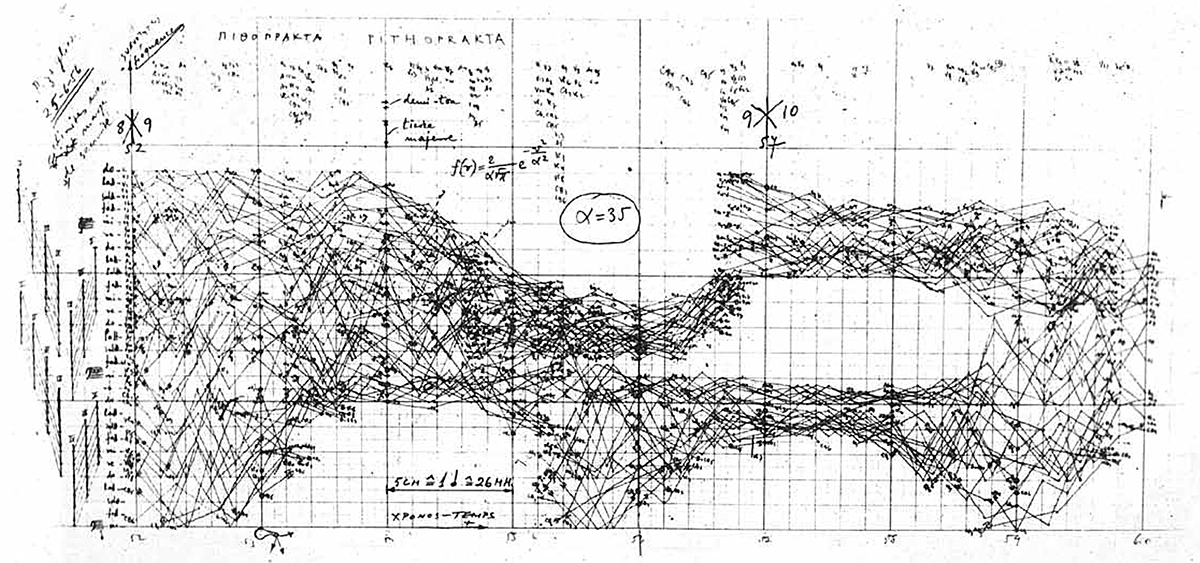
→ Iannis Xenakis, notation of the music composition Pithoprakta, 1956.
related PROJECTS
related NEWS
